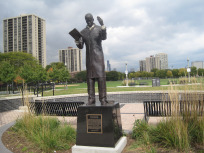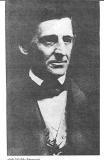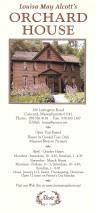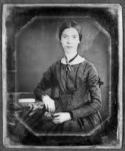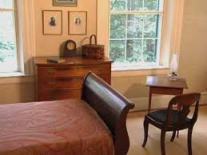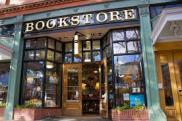Lynn M. Dixon's Blog, page 75
October 11, 2014
New Paul Laurence Dunbar Statue!
I was driving on 31st Street the other day and looked to the right to see the new sculpture of Paul Laurence Dunbar in Dunbar Park. I knew that there had been a recent dedication of the statue and there it was, awaiting my attention. I vowed to come back and take pictures and share this new gem on my blog.
It sits behind the high school of the same name where the famed singer, Jennifer Hudson attended. When I think of this great poet, I think of the poem, We Wear the Mask. I quote it often because it speaks to me when I feel that people are not being honest with me. I also knew that he wrote in dialect and lived a short life.
So, after a little fact checking, I discovered that he was born to freed slaves from Kentucky and he was born in Dayton, Ohio in 1872. I also learned that he was the only African-American at his high school where he became the President of the Literacy Society. His first poems were published at the age of 16, and he also wrote lyrics. He became nationally known and was recognized by author William Dean Howell (Wikipedia).
On the next day, I drove over to the actual statue. It stands about six feet tall and was sculpted by Deborah Hand with the assistance of her son, Brian. “In March 2012, Deborah Hand, who was assisted by her son, Brian, was selected to create and complete the statue. According to Mr. Hand, they were selected after submitting an application as part of an open call for artists.
Mr. Hand estimates that the statue of Dunbar weighs between two to three tons, cost an estimated $80,000 in materials to create, stands a total of nine feet tall when mounted on a granite slab, and was completed in about 20 months.” (Edwards, Lee. Paul Laurence Dunbar Statue Unveiled at Dunbar Park, Weekly Citizen-Sept 10, 2014)
The inscription on the statue tells us that Paul Laurence Dunbar met Frederick Douglass during his lifetime and was invited to read poetry at the World’s Columbian Exposition of 1893. I did not know that he had read at the Expo. After teaching eighth graders about the meaning of the four red stars on the Chicago flag, this piqued my interest. The third star symbolizes the World Columbian Expo of 1893 and the actual Expo took place a short distance away from where the statue stands.
The inscription also says that he edited a newspaper owned by the aviator Orville Wright. Though Dunbar died of tuberculosis at the young age of 31 in 1906, his life touched the lives of greats such as Orville Wright, Frederick Douglass and William Dean Howells. We still honor and quote his works today and I am happy to witness this magnificent addition to the city’s landscape.
Lynn October 11, 2014


October 9, 2014
Alternate Choices
The other day while I was on the lakefront, a couple stopped me and asked how far they would have to walk to get to the Museum of Science and Industry. They were obviously tourists and I told them about 25 blocks. I assured them that it was something that they could do and certainly with each other’s company, which they seemed to enjoy.
I let them know that getting a bus there would be rather difficult after they inquired about other choices of transportation. It could be done but not without a lengthy walk and a bus transfer. They thanked me and proceeded on the bike trail that sunny and mild October afternoon. I assumed that they had chosen to walk as I went on to my car.
Yet, as I was driving away from the lakefront, I looked over and saw that they had decided to rent two Divvy bikes instead. I was amazed as I saw them leaving the bike station and about to mount their bikes. I could not get their attention, but if I had, I would have thrown them a “thumbs up,” to let them know that they had made an excellent choice.
“In 2007, Chicago Mayor Richard M. Daley visited Paris, France, where he personally tested out their Vélib’ bicycle sharing system and was “greatly impressed.” He determined that a similar system would work well in Chicago” (Wikipedia). http://en.wikipedia.org/wiki/Divvy
It reminded me that we can ask for suggestions and information. We take what was given and combine it with our own mindset and come up with a solution or decision that we can live with. Together, they surely enjoyed the scenic Lake Michigan at a comfortable pace. Later, I stopped to take pictures of one of the many Divvy bike stations around the city. I read the sign and saw that it only costs $7 for 24 hours. It would cost that much for a couple to simply enter a cab.
“Divvy is a bicycle sharing system that launched in Chicago on June 28, 2013 initially with 750 bikes at 75 stations spanning from the Loop north to Berwyn Ave, west to Kedzie Ave, and south to 59th St. The system was planned to grow to 4,000 bicycles at 400 stations by Spring 2014 (Wikipedia). http://en.wikipedia.org/wiki/Divvy Current mayor, Rahm Emanuel fully supports the Divvy bike program and it gains further popularity daily.
As with this young couple, there is nothing like having choices in life or alternatives. With the biking choice, they could move with speed, have the opportunity to flex those rarely used muscles, and blow out the mental cobwebs as they cruised southward along the calm Lake Michigan.
We did briefly discuss other choices of transportation they could use after enjoying the museum. They could return to their hotel by cab, bus, train, bike or walk back. They had multiple choices from which to choose. We make choices that make us happy or sad; but choose, we must. They seemed elated with the inexpensive, healthy choice that they had made as they led their blue Divvy bikes across the overpass towards the bike trail.
Lynn October 9, 2014


October 7, 2014
That Protective Shell
Joel Osteen often talks about the “favor” on our lives. Sometimes when we do not get what we thought we wanted and things are withheld from us, we pine and sigh and ask why. But later, we see that there is a big, protective shield around us, though it is unseen by the human eye.
We don’t get what we thought we wanted because it’s not for our best or highest good. What we should spend more time doing is filling up our gratitude page and listing those things we do have such as shelter, food, clothing, transportation and as the elders said in the South, ‘a reasonable portion of our right minds.’
If there is no job as we know it, perhaps we are unconsciously doing other types of work. It could be that we are freed from a 9 to 5 to give special attention to a loved one in need. When working on a rigid schedule, we may be less responsive and less compassionate towards someone else as we focus on our own daily needs.
It could be that we are being protected from a highly stressful work environment that may challenge our health. It could be a time to renew, refresh and regroup before the next assignment which may require that we expend high levels of energy.
Or, if we don’t drive to work, it could be meant for us to get on public transportation and be there for some unsuspecting soul. They may have a story to share that may save a life. A listening ear may be all that they need. Or, there may be a conversation that gives us a much needed answer to one of our own dilemmas.
This lull time could be a time to develop some of our other skills. That is why they are called ‘skill sets.’ We may call ourselves by a certain job title, but we all use multiple skills daily and more than one can be accentuated. The more, the merrier. Sometimes, we need time to pull out some of those dormant talents, brush them off and realize that they too are marketable.
Though we may find it hard to believe, we are usually where we are supposed to be at a given time. We will see how it all comes together further down the road. It becomes clearer over time. Actually, it will become crystal clear.
It is said that hindsight is 20-20. We can look back on some past situation or outcome and see that we were in our right place at that time. That invisible shell surrounding us kept some deterrent to our well-being at bay. Or, it could be that we are being further refined for something new and wonderful coming down the pike.
I had one minister who graciously reminded us to “bloom where you are.” One of my favorite writers, Zora Neale Hurston said in Their Eyes Were Watching God, “There are years that ask questions and years that answer.” We should stop questioning and simply continue to give to others as the process unfolds into its perfect design.
Lynn October 7, 2014


October 5, 2014
Gradually Moving Forward!
The other day while I was sitting at the lakefront, I noticed that there was an event going on so I chose to enjoy the lake from my car. I had seen the television news van which indicated that they were there for some coverage. On that sunny Friday afternoon, there was a walk-a-thon taking place and many of the participants had on orange backpacks.
What I did note was the gradual pace in which the people moved. They seemed very relaxed as they moved towards their goal. They were on a mission but they approached it with a sense of ease. Some even pushed baby strollers as they walked as Thich Nhat Hahn would say, ‘in spirit on mindfulness.’
This was a quick life lesson for me. We can move forward in an unhurried pace towards some new goal in a steady, determined fashion. We can fold away the negatives like we do a newspaper we have finished reading. We can try to put it back together but it clearly will not be in its original state. We have extracted what we needed from it, so it is ready for discard.
As in life’s experiences, we take the gold or good from each circumstance; throw away the peelings or scraps; eat and digest the fruits or sustenance inside and grow from the nourishment we have received. Bottom line, in a gradual pace forward, we let go of what or who we don’t need and move on. It may appear as if we are moving effortlessly but that is merely because we have already made the decision to tarry forth.
Those people walking along the lakefront that day had already made up their minds that they were going to spend that Friday walking a marathon. What I witnessed was the result of decisions made earlier. Forward march!
As my mother liked to say, we move ‘from glory to glory.’ We gently close the door on the past. We make sure the hinge on the door catches to assure that is indeed closed. We breathe a sigh of relief that it is over. We feel grateful that we survived it as a sense of quietude surrounds us. We know that something has been completed. We have seen it through and we are ready to move on to the next phase of living.
We focus on gathering up the fruits of our labor during this harvest season. We banish that which no longer well serves us and we can gracefully ease on down the road. We keep our emotions in check and ‘keep our cool emotionally,’ as Catherine Ponder reminds us in The Millionaire Joshua. Referencing the British, we “Keep Calm and Carry On!”
Lynn October 5, 2014


October 3, 2014
A NE Literary Walk: Ralph Waldo Emerson
Emerson and Thoreau were transcendentalists that believed that people can trust themselves to be their own authority on what is right. I always found their philosophy interesting, so of course, they were included in my New England literary walk. Emerson lived right across the street from the Alcotts and he, Thoreau and Bronson Alcott taught Louisa May. What a lucky girl! She exemplified this Emerson quote,
“Do not go where the path may lead, go instead where there is no path and leave a trail.”
However, this post is focused on the illustrious Ralph Waldo Emerson. If we are in need of good, sound advice or a substantial quote to support some literary work, we often look to Emerson. He was well-versed on a number of topics and his insight and opinions are still highly trusted and valued today.
“The purpose of life is not to be happy. It is to be useful, to be honorable, to be compassionate, and to have it make some difference that you have lived and lived well.”
As the tour guide led us through his home, I noticed the furniture. It was heavy, solid wood and it stood very high. I imagine the movers had a time getting it into the house and certainly up to the second floor. The old, sturdy furniture was well-built and some of it may have been shipped from overseas. I thought of words like chest of drawers or chifferobe as I looked at the pieces, but certainly quality and class came to mind as well.
Henry David Thoreau lived with Emerson for a while as his handyman. Thoreau also designed some of the unique furniture there. Notably, there was a chair that had a drawer that pulled out. The tour guide demonstrated how it worked and it housed Emerson’s Sunday sermon gloves. He had a hard time keeping up with them and this was a unique way of helping him to stay organized.
From all of the pictures that we see of him, he seemed to be a dapper dresser. We also saw a corner where he kept his walking sticks. I could picture him going to the church to deliver a message dressed in all of his finery.
“What lies behind us and what lies before us are tiny matters compared to what lies within us.”
Emerson’s study was his mainstay and that it is where he spent most of his time, when he was not traveling. We saw a rotary-type writing desk which had compartments specifically designed to hold his papers. He wrote many letters and essays there. We know that he was a prolific lecturer, pastor and essayist.
He and his first wife, Ellen had one daughter also named Ellen. He later married Lidian, after the first wife died and they had four children together. The tour guide spoke of his ability to discipline them in a calm manner. For example, if a child was upset, he would tell him to go out and look at the clouds to redirect his focus.
Emerson was highly influential and met many great persons such President Lincoln, Thomas Carlyle and Ulysses S. Grant. Lincoln’s picture was one of the first things I saw on the wall upon entering the home. It is said that Emerson, Thoreau and Bronson Alcott’s acute intellect brought many great thinkers to the city of Concord.
“Nothing is at last sacred but the integrity of your own mind.”
When I walked back to the train station that July day, it rained lightly and then it stopped. The area was highly wooded and grassy; but the rain felt like a baptism of sorts because I had experienced a showering of blessings in Concord. At the train station, I bought a scoop of ice cream from a shop called Bedford Farms Ice Cream to celebrate my inner victory. I boarded the train feeling satisfied.
“Nothing can bring you peace but yourself. Nothing can bring you peace but the triumph of principles.”
Lynn October 3, 2014


October 1, 2014
A New England Literary Walk: Louisa May Alcott
Another New England literary walk took me to the town of Concord, Massachusetts where I visited two authors’ homes. I went to the Orchard House, home of Louisa May Alcott and the Alcott family. I was given good directions to the Fitzburg line, a part of the Boston T train system.
I was still learning how to navigate my way, but finding the home was fairly easy. I went into the Orchard House Bookstore and purchased a couple of greeting cards as I waited for the tour to begin. I sat on a garden bench outside of the house and wrote my mother. She had read parts of Little Women to me and my sisters when we were small and I knew that she would be happy to share this experience with me.
The tour started on time and as we entered the living room, I noticed a large painting of an African American girl. It was surreal and I imagine that the youngest daughter May had painted it. During that time, most blacks were still slaves and the Alcotts sometimes saw runaways. She must have been impressed to paint this picture for a reason.
They supported the abolitionists and Marmee used quilts with designs that had arrows which pointed in the direction of the next safe haven. This was all shared by the tour guide as we continually moved through the house.
We went upstairs and saw the bedrooms where the family slept. I remember the paintings on the walls and I mean on the actual walls. May, the painter, used the walls when she ran out of paper or canvas. What understanding parents! She did great work.
Back downstairs in the living room, we saw nice plush furniture with a small piano. Louisa wrote as she reclined on the couch and she used the couch pillows to indicate her moods. She was known to be temperamental and the family tip-toed around her. If she had the couch pillow sitting up, they knew not to speak to her. If she had the pillow in a down position, they knew that she could be approached.
Louisa could write for eight to nine hours at a time. When one hand gave out, she would switch over and write with the other one. By the time that she wrote Little Women, she had already served as an army nurse in Washington D.C during the Civil War. Unfortunately, she caught typhoid fever. She was escorted home by Ina, the daughter of Nathaniel Hawthorne. She was very ill and it took a while for the family to nurse her back to health.
She never fully recovered and her right hand was somewhat impaired. This is why she switched over and used the left hand to continue her writing. It is said that she wrote Little Women in about six weeks. She did enjoy some monetary comfort from book sales during her lifetime. The family depended on her financially and it is said that when the responsibilities were too great, she would escape by spending time in Boston.
Louisa spent her earnings on things like purchasing a heating system for the house, buying Thoreau’s house for her older sister after she became a widow, and paying for art lessons for her younger sister, May. When May died after childbirth overseas, Louisa adopted her daughter, Lulu and bought her fancy clothes which she did not often buy for herself.
Louisa moved the remaining family to Boston after her mother and two of her sisters died. She was a giving soul and if she did not feel fully appreciated during her lifetime, her praises are still being sung today. She will always be the author of moving pieces such as Little Women and Little Men.
She did write under pen names such as of Flora Fairfield and A.M. Barnard. The full extent of her publications may be illusive but to me, she will always be Jo, the tomboyish sister who spoke the truth in Little Women.
Lynn October 1, 2014


September 29, 2014
A New England Literary Walk: Emily Dickinson
A few years ago when I lived in Boston, I took a bus trip to Amherst, Massachusetts. I had researched a literary walk and found a book at the public library called A Guide to Writers’ Homes in New England by Miriam Levine. Emily Dickinson’s Homestead was on my list of authors’ homes that I planned to visit. I had taken a college course about Emily Dickinson and I was interested in her life and her work.
I took a Peter Pan bus and I let the melodious voice of Nat King Cole serenade me during the entire journey. I changed buses in Springfield, MA and took the second bus on into Amherst. When I arrived in Amherst, the bus let me off right across the street from Amherst College.
There was a May Day celebration taking place on the college lawn and the students were decorating a maypole with flowers and ribbons. It was a pleasant scene. On another part of the lawn, there were tents set up and the League of Women Voters was having a book sale. I found a duplicate of a textbook that I had used when teaching American literature. I was delighted!
I ate at a nearby Subway and walked a short distance to Emily’s home. I sat in her backyard where I saw her garden as I waited for the tour to begin. I later learned that she was interested in botany and liked to work in her garden.
Our tour guide was a young English major from a nearby college named Stacey. The tour started downstairs and we were shown many of the Dickinson family artifacts. They once owned a hat factory and we saw a hat from that era. On the wall, she had written, “I dwell in possibility.”
We were shown Emily’s personal library and it included books by authors such as Bronte, the Brownings and Shakespeare. When we moved towards the kitchen, Stacey said that Emily was a good cook. She cooked gingerbread and lowered it down in a basket to the awaiting children. We saw the basket sitting by her bedroom window later during the tour.
The one picture we normally see of Emily was taken when she was about sixteen years old. Few people knew that she was a redhead. One quote said that her hair was “as red as a wren.” Her sister, Lavinia, who was very attentive to her, said that “it was Emily’s job to think.”
I felt closer to Emily and her story when we went upstairs to her bedroom. We saw a replica of the white linen dress that she often wore. It was in a glass case and set over to the side. We were told that her writings were found in a lot of places on all types of paper by her sister, Lavinia. Some poems were loose and some were bound. The poems did change hands during publication and I wonder if some of her meanings were ‘lost in translation.’
One thing is clear. She was moved by the events around her and she had a voice. According to the tour guide, she could see a cemetery from her room and a number of her poems talked about death. She could see the processionals and was acutely aware of life’s mortality.
Emily chose to view life from a high perch as she wrote about what she felt and saw. Though misunderstood during her life, she can now live by her words, and ‘I chose just the crown.’ Her name will forever be written among the stars as a true American poetess. Fittingly, she can attest to her words that, “Saying nothing… sometimes says the most.”
This visit was well worth the trip and I will cherish its memory.
Lynn September 29, 2014


September 27, 2014
Bookstores
After reading an article published in the Author Daily Discovery, I was inspired to write a post about bookstores and their importance in our lives. The article states that author James Patterson recently donated money to a number of independent bookstores in the UK and Ireland. More specifically, it says, “More than £130,000 has been allocated to 73 independent bookshops in the UK and Ireland in the first round of grants funded on this side of the Atlantic by author James Patterson (Shaffi, Sarah. Patterson awards grants to 73 Indie bookshops, 9-25-14).
They were impressed that the donations came from this side of the “pond” or the Atlantic. The goal is to help struggling bookstores that encourage children to read. “For the lucky 73 shops, the James Patterson money will make a real difference to how they reach children and encourage them to read” (Shaffi).
I was reminded of several things as I thought about my own literary walk or journey. When a good, solid job could not be found during one phase of my life, I ended up working at Waldenbooks in Tennessee. This one job as a bookseller led to many wonderful experiences and exposure to a whole new world.
My assigned sections were religion, self-help and romance. As Robert Frost wrote in his poem, “The Road Not Taken, ““I took the one less traveled by; and that has made all the difference. “ Those three subject areas have become prevalent themes in my novellas.
During my stint there, I had to read in order to be a top bookseller. I could not recommend a book that I had not read and simply say it was a good book. I needed to do a quick book talk to make the sale. Of course, I could not read everything, but I read a lot of new stuff, hot off the press. My mother and I read the new novels that I brought home from the store on loan. We had a reading jubilee on a regular basis!
The little ladies would await the new editions of the Harlequin romances with anticipation. They would come with their little shopping bags waiting for them to be shelved. I watched as they checked the copyright page to make sure that it was the newest edition of a series. That was funny. But, they left as happy campers.
Working at the bookstore was a rich experience. It was located in a mall and there were always fun activities going on such as art fairs, many colorful displays and animated presentations. Retail work is quite a different animal because the hours can be challenging, but as in any endeavor, there is always fruit to be garnered or collected.
I went back to teaching at some juncture, but I did work at two other bookstores in that area. Seeing the smiles of satisfied customers or having the joy of wrapping up their choices during the Christmas season was fulfilling in itself. I met people from all walks of life and laughed with staff that looked to humor when things became a bit too stressful.
Bookstores are unique places that are becoming increasingly harder to find. I know that the UK and Ireland will appreciate the money donated by James Patterson for the independent book stores. I recently traveled to a Barnes and Noble bookstore and it was refreshing to a have time to browse and make selections. I did not have any particular titles in mind, but two books seemed to be calling my name.
I am currently enjoying a book called Perfect Peace, by an author that is new to me. The ability to browse helped me leave with this new prize. Ordering online is a quick and convenient way to get my hands on a book, if I know what I want. But if I really want to pick up a book, handle it and read the blurb, I need to enter that actual space of a bookstore.
I have recently read a host of e-books and I like using my Kindle and Nook apps, but a bookstore is like a library. Virtual space is fine but absolutely nothing takes the place of being in a building with shelves of books. The smaller and independent bookstores have an added flavor because each has its own unique character, personality and ambience.
Some very creative spaces are being funded through Patterson’s donation. “There are some really exciting projects that this money will help get off the ground, from converting a van into a mobile school bookshop to running a model train around the shop to get kids engaged” (Shaffi).
Kudos to James Patterson! He is helping to keep those browsing spaces alive and well!
Lynn September 27, 2014

September 25, 2014
Birthday Bashes!
I am the one that remembers the dates of our family members’ birthdays. Even the extended family. Why? Because my birthday is very important to me. That day is exclusively mine. I think of the children at the schools who often wear crowns or tiaras on their special day. Many times, the crowns have been made out of construction paper by the hands of some loving teacher.
Birthdays. This is a time for celebrations because we have been graced with another year of life. When we see so many of our family members and friends passing on, we learn to take nothing for granted. Another year added to the tick count is truly a blessing.
In my family, five out of six people were born in the month of September. Mine comes first. This year, me and one of my sisters went out and listened to a live band. They sang and played music that we grew up on and we really enjoyed ourselves. As many of the songs took us back down memory lane, I danced in my seat.
Next, my father’s birthday came and I spent it in quiet reflection as I worked on a writing project. He would have liked seeing me focused. This would coincide with his strong work ethic and innovative thinking.
Then, my sister and my mother’s shared birthday rolled around. On that day, I traveled to my sister’s home and she acted as the Dee-jay. She chose the music and I danced. I periodically looked over at my mother’s picture on the mantle and felt that she had also joined the party. I danced as Prince said “like it was 1999.”
In Paule Marshall’s Praisesong for the Widow, Avey, the main character sees some of the elders in a shuffle-like dance which was a form of ritual and healing. “She remembers the jubilant Ring Shouts she and her great aunt would watch from across the street, and the people did as they shouted their praises” (Praisesong for the Widow-Summary).
Later, Avey joins in the dance. She realizes that she needs to heal after the recent loss of her husband.“She goes, and is so nurtured and welcomed, so nursed out of her pent up pain, that she rediscovers her ability to dance, and in so doing, reconnects with her own lost heritage, dedicating herself to passing it along to her own descendants, just as her great aunt had passed the stories on to her” (Praisesong for the Widow-Summary).
Dance can be a form of celebration, ritual or rite of passage. ““Many styles of dance are characteristic all our cultures past and present, not only as a form of relaxation or entertainment, but they also constitute part of important ceremonies, rituals and rites of passage.” (Wikipedia)
Birthday celebrations are truly rites of passage. A birthday allows us to look both ways down the avenue of life. We can look back to where we have been or we can look forward to where we are ready to go.
My oldest sister’s birthday is the last family celebration of the month. I took a short trip to spend time with her. We put candles on a cupcake and allowed her to blow them out. She also played a variety of music from her bed and I danced. I relaxed and entertained at the same time. We both rejoiced during our rites of passage as we creep up the numerical ladder in age.
She had creatively posted these words on her wall. “Life isn’t about waiting for the storm to pass. It’s about learning to dance in the rain.” This spoke volumes to me and I decided to tweet those words, as well.
This September, I have decided to claim the entire month as my celebration month. I have danced, shopped and traveled. I even attended a ballet which is one of the most exquisite forms of dance.
Birthday bashes are nice during those years when all things fall together. But, a birthday is a birthday whether it is spent in quiet reflection or out amongst others. They mark new beginnings and remind us of how special we are to our loved ones. We can see how far we have come, as we look ahead expecting more new and wonderful things in the future.
How did you celebrate your last birthday?
Lynn September 25, 2014

September 23, 2014
Settling the Score!
Sometimes we have to settle the score. When unpleasant events arise, and they will, we must first settle the score within ourselves. Once the hurt, inner turmoil and turbulent emotions have been faced, we have a better chance of putting those feelings into a safe place of finality.
I often journal about things, people and situations that unsettle me. It helps me tremendously. Lord Byron wrote, “If I don’t write to empty my mind, I go mad.” Diaries and journaling can be great aids for self- analysis and self-awareness.
If possible and feasible, I will sit down and talk with those who appear to be the opposition. But this option is not always available because oftentimes the opposition cannot speak from a level of honesty. True feelings cannot be brought to the table for discussion if both parties have not faced the truth within themselves. But, as Eleanor Roosevelt says, “No one can make you feel inferior without your consent.”
When those tete’- a’- tete (head- on talks) are ruled out, it is our responsibility to get ourselves back on the right track and in a feel-good mode. Resilience can and will occur once the debris and cobwebs are cleared from the mind. It is all about advancing to the next stage, step or level of peacefulness. How do we do that? We can:
Journal, as mentioned earlier.
Talk with the conflicting source, if possible.
Talk with someone objective about the situation.
Listen to what our inner voice is saying and learn from it.
Stay with the problem, until we feel that it is really settled.
Sometimes, we do not know why we feel what we feel. We just know that something is eating away inside and that something has rattled us. Like a chest of drawers, we must pull open the drawer and take a look at what is inside. When that drawer is wide open, we can speak honestly and say, for example, ‘When this situation occurred, I felt betrayed, deceived, unappreciated or disrespected.’ We can acknowledge what caused the stir down in our souls and the healing process can begin.
Once we have faced those dark emotions, we can start flipping on the light to hopefully ‘shoo’ those hurtful or angry feelings away. “It is better to light a candle than curse the darkness,” Eleanor Roosevelt reminds us. We can decrease the big “I” to a little “i” which will take away some of our self-importance. New and more refreshing thoughts will emerge that will uplift and benefit us.
We can then adjust our thinking and see that the conditions or people who we felt were out to harm us were simply working out their own agendas. Once we have a clearer view, we can basically see that it is all in how we take it. Dr. Wayne Dyer says, “If you change the way you look at things, the things you look at change.”
If something has ‘floored us,’ we must get up off the floor.
If someone who we thought we knew, shocked us, we must understand that we did not really know that person. People wear layers of masks.
Finally, settling the score is our responsibility. We must face what has occurred, look at it, evaluate it, soak it, soap it, and wash it. Like a set of sheets, we can then hang them out to dry. When they are dry, we can take them down, shake them out, fold them and neatly tuck them back into the chest of drawers. Close it gently, let it go and move on, knowingly.
Have you ever felt that it was time to settle the score regarding some situation?
Lynn September 23, 2014



